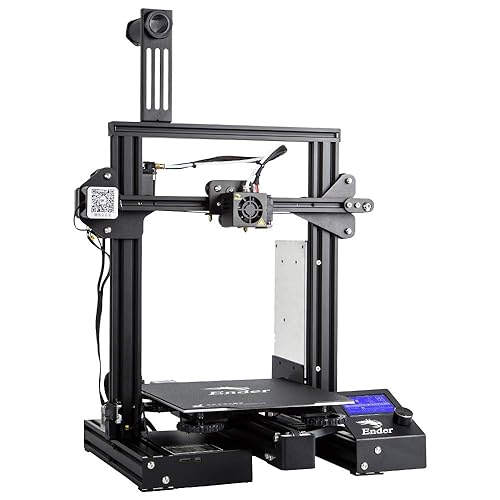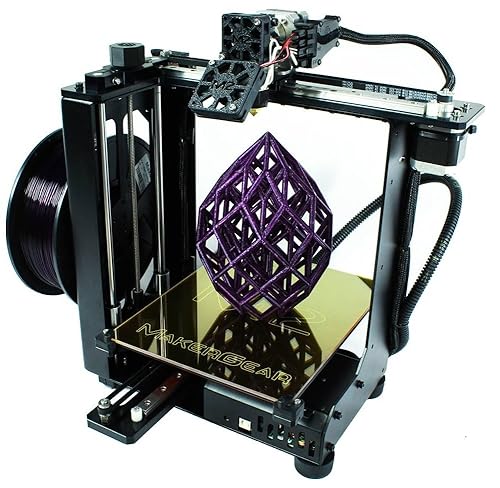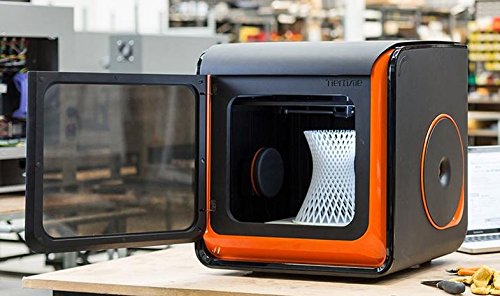3D printers can set you back by several hundred dollars regardless of whether you buy an entry-level or a high-end model. The price of a particular 3D printer depends upon its features as well as the print quality.
There cannot be a universal answer to this question as you’ll find different types of printers, every type having its distinct features and functionalities. Though the majority of 3D printers are expensive, you’ll come across several 3D printer models that are pocket-friendly and reasonably priced. A typical 3D printer, on average costs approximately $700 but if you search intensively, you could find one costing $200!
On the other hand, most of the expensive 3D printer models could cost over $10,000. Some printers cost more than $1, 00, 000. Nevertheless, the prices of 3D printers have plummeted sharply over the past 3-4 years.
If you were looking to buy a standard 3D printer, say in 2015, you’d have struggled to zero in on a model priced below $2,000. But nowadays, you can easily find a 3D printer costing below $1,000, and a quality one at that. That said, entry-level and hobbyist 3D printing models cost much less than the professional ones.
So, if you wish to know how much a 3D printer (irrespective of whether you’re purchasing it for your office or home) will cost, you should ask yourself:-
- What uses do you wish to put the printer too?
- How much can you afford to spend?
Table of Contents
3D Printers: Different Types and Their Prices
When it comes to selecting an appropriate 3D printer, what you get may not necessarily be what you want. This could happen either because the model you’re looking for is beyond your budget or is unavailable. Zeroing in on a model that’ll meet your printing requirements becomes easier if you know what you’re looking for.
To make your search easier and simpler, we’ve grouped the different 3D printer types into five broad categories. We’ve mentioned the trending price, features, functionalities, and sizes for every category. Go through every type/category carefully before you make up your mind to buy a model.
3D Printers: Entry-Level (costing between $200-$400)
An entry-level 3D printer, as the terminology implies, is designed for the first-time user, someone with hardly any digital printing experience. Basic 3D printers come in perfectly handy for picking up the nitty-gritty of the technology before graduating to an advanced product. A moderate learning curve is associated with entry-level 3D printers as these devices have their limitations.
For a start, you may not be able to print anything which is beyond 3”-4” in length, width, and height. Then again, you’ll have to use a device that makes use of only one filament, thereby restricting your material choice. Other major drawbacks that you’ll have to put up with while using rudimentary 3D printing models are their noisiness and slowness.
However, the most glaring drawback or limitation of an entry-level 3D printer is that it prints low-quality images and texts. This is so because basic 3D printers have a very low printing resolution rating. Talking about their active shelf-life, do not expect an entry-level printer to remain in service for more than 2-3 years.
More often than not, such a 3D printer may be delivered to you in an unassembled form. So, you may need to put together the individual sections together before you can start using the printer. And assembling the pieces could be a challenge, especially if you’re not a pro and don’t have any printing experience.
Creality CR-10 and FlashForge Finder are two high-quality entry-level 3D printers you can use for learning the fundamentals of 3D printing.
3D Printers for Hobbyists (priced between $400-$1500)
Hobbyist 3D printers are ideal for those who have garnered a specific level of experience with regards to 3D printing. 3D printing enthusiasts and aficionados, who’ve nurtured and developed a passion for this printing technique, find such printers very handy. They can fuel their creativity and give shape to their 3D conceptualization using hobbyist 3D printers.
3D printers for hobbyists are a step ahead of entry-level printers as they’re more efficient than the latter. Hobbyist 3D printers are more performance-oriented compared to basic models in terms of speed, printout size and quality, and flexibility of use. For instance, the average size of a printout that you get from a 3D printer for the hobbyist is 5”-6”.
Then again, most of the 3D printing machines for hobbyists produce printouts at a faster rate in comparison to the basic 3D printing equipment. You also have more options when it comes to choosing the material for your 3D prints. No matter whatever type of 3D printer you use, you’ll inevitably need a 3D printer ink or filament for creating a print.
As of now, 17 different 3D printer filaments are available, including but not limited to ABS, PLA, HIPS, Nylon, and TPU. With hobbyist 3D printers, you can use plastics (ABS and PLA), metals (stainless steel, titanium, gold, and silver), gypsum, ceramics, and sandstone. Nevertheless, there’s no disputing the fact you’d generally use such a 3D printer mostly for personal printing purposes.
If you want a 3D printer capable of printing in bulk without sacrificing quality, you should explore professional or industrial printers.
3D Printers for Buffs (price ranging from $1500-$3,500)
Once you’ve mastered the use of hobbyist 3D printers, you’re in a position to graduate to the next level of 3D printing. Those who’ve become proficient in using 3D printers for hobbyist are ideal candidates for taking advantage of enthusiast 3D printers. A 3D printing device for printings aficionados and buffs is, of course, more sophisticated than a similar device for hobbyists.
This type of 3D printing apparatus features many versatile features that users can make the most of. On the other hand, the quality of the images, representations, illustrations, and icons are far better than those produced by categories above. The turnaround time for printouts is also speedier, and enthusiast 3D printers also happen to be less noisy than entry-level or hobbyist models.
The minimum printout size that such a 3D printer can produce varies from 8”-12”. Then again, you can select from a wider variety of printing materials, though a few models use only proprietary filaments. However, you’ll need to take note that 3D printers designed for buffs are not suitable for large-scale printouts.
If you need to take printouts in bulk or large volumes, you should consider purchasing industrial or professional 3D printers. So, now you realize why a 3D printer for enthusiasts is called as such. Though you can use enthusiast 3D printers routinely, you’d be better off not using them on an extensive basis.
Such 3D printers are vulnerable to breakdowns if you use them heavily.
3D Printers for Professionals (price varying from $3,500 to $6,000)
A professional 3D printer is your best bet if you’re in charge of an advertisement firm or a printing establishment. 3D printers designed for professional applications generate printouts having an all-round dimension of1,” and the printouts are of premium quality. You also have full leeway in using numerous kinds of 3D printing inks and 3D printing filaments.
The prints come out in a wide range of textures, not to mention the vast array of colors. Moreover, the professional 3D printing appliances produce prints at an incredible speed and at the same time, maintain quality. And the majority of the 3D printers for professionals are designed for long term use.
So, you do not need to worry about the durability and longevity of these 3D printing apparatuses. Professional 3D printers carry a steep price tag owing to their versatility. If you’re seriously considering going for a professional 3D printer, you can check out ‘Form Labs Form 2’ and ‘Fusion3 F400-S’.
3D Printers for Industrial Use (costing upwards of $20,000)
You’ll feel the need for an industrial 3D printer when you’ve plans to start a large-scale business or an MNC. It can be said without mincing any words that industrial 3D printers mean serious business. You’ll come across these mammoth 3D printing machines in aerospace, automotive, engineering, healthcare and pharmaceutical, and manufacturing industries.
Industrial 3D printers also find extensive use across primary and secondary schools, colleges, universities, fashion, product design, and so on. Needless to say, such giant 3D printers are extremely hardy and resilient as they’re constructed from different types of metals. They come with a highly intuitive and receptive UI (user interface) that facilitate carrying out customized printing projects.
Offices and commercial establishments housing industrial 3D printers usually have separate teams for operating and maintaining these machines. Again, there are restrictions or limitations with the types of materials you can use on these 3D printers. Not only are such gigantic printing contraptions extremely expensive but even the filaments that you use can burn a hole in your pocket.
You’d need to be exceptionally skilled and have many years of professional experience under your belt for operating an industrial 3D printer. However, the demand for such machines is going down due to their high running and maintenance costs. These days, big businesses and conglomerates are opting for professional 3D printers.






Leave a Reply